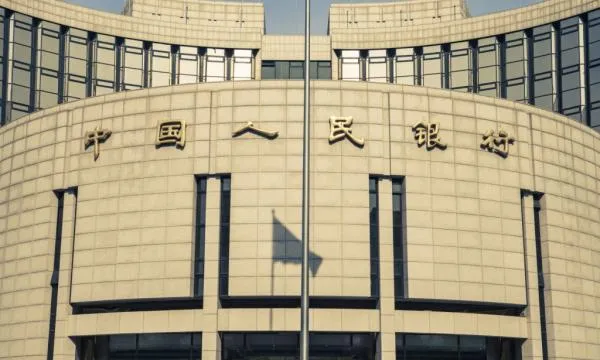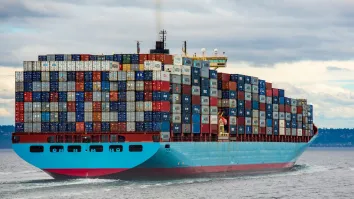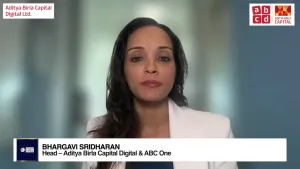
Banks caught in Beijing's risky balancing act as second largest economy stutters
The People’s Bank of China has launched a Central Bank Bill Swap to help banks actively lend more.
Two months after the world’s second-largest economy posted its slowest growth pace since 1990, Beijing has stepped up its support for the banking sector, highlighting its key role in the government’s plan to sustain the pace of expansion. However, smaller banks will likely face a trying 2019 despite the slew of measures meant to expand capital access and bolster profits. Unlike the goliaths of the banking sector, smaller banks will feel the squeeze on all sides, from the aftershock of the government’s deleveraging drive to the current push to boost lending as a way to support the slowing economy.
Larger state-owned banks are relatively more insulated from the current industry pressures compared to smaller private banks, which are more exposed in terms of weaker loan quality, funding concerns and diminished access to both internal and external capital, according to Andrew Wong, vice president, credit research at OCBC, as they enjoy better access to higher-quality borrowers and a robust funding stream via deposit franchises and capital market access.
China’s economy grew at a slower annual pace of 6.6% in 2018 and Beijing has targeted a more modest expansion of between 6-6.5% in 2019 amidst a turbulent geopolitical backdrop marked by trade tensions with the US With the decelerating economy weakening the ability of businesses to repay debt, the NPL ratio of Chinese commercial banks climbed to a 10-year high of 1.89%, said Liu Zhiqing, deputy head of the statistics department of the China Banking and Insurance Regulatory Commission (CBIRC), according to a Reuters report. “Banks will need to remain alert to these dynamics too and monitor their risk profile through stringent underwriting,” added Wong. “Higher-than-expected loan losses will be more detrimental to earnings and capital generation in this slower growth and tighter funding environment.”
Banks will also need to make full use of the perpetual bond issuance policies and other measures that may be rolled out in a bid to ease capital constraint, he said. In January, the People’s Bank of China launched Central Bank Bills Swap (CBS) to support perpetual bond issuance, which the central bank reckoned will help banks replenish their capital and be in a stronger position to support the broader economy through their lending operations.
“We see the action is credit-positive for banks’ depositors and senior debt holders because the swap facility will increase the attractiveness of bank-issued perpetual bonds to participating investors and support banks’ efforts to strengthen capital,” said Ray Heung, senior vice present at Moody’s Investors Service.
The CBS scheme functions as a policy aid for banks to achieve the ambitious administrative target on lending to the private sector and expand their balance sheets accordingly, said Alicia Garcia Herrero, chief economist at Natixis.
By allowing banks to exchange their holdings of perpetual bonds with central bank paper, this will boost demand for perpetual bonds and aid the replenishment of noncore Tier 1 capital, said Herrero.
“We believe the development of central bank bills are strongly linked to the support for China’s cash-strapped private sector,” said Herrero. “Banks will be supported whilst obliged to lend for China to stem off its rapid deceleration.”
“The ultimate consequences of all of these are yet to be seen, but it is clear China is ready to do whatever it takes to grow, no matter whether you define it as quantitative easing or not,” she added.
Wong noted that bolstering demand for perpetual bonds should increase their capital buffers and lower funding costs, a critical goal given the current profitability challenges hounding the banking sector as NPLs escalate. Special mention loans or lending that’s potentially at risk of slipping into non-performing status rose to $503.19b by December 2018, representing around 3.16% of total commercial loan value, according to CBIRC data. Relatively smaller commercial banks along with rural banks appear to be bearing the brunt of the impact, as their larger counterparts benefit from more expansive coping mechanisms.
“Although China is facing more bond defaults than ever, the problem of rising NPLs has been eased as Chinese banks resort to more write offs and continuous asset securitisation, especially for large state-owned commercial banks,” said Herrero. “That said, banks are able to share the risks of stressed assets with the rest of the financial sectors and household.”
Aside from climbing NPLs, banks are starting to feel the sting of higher deposit funding costs following a decline in deposit growth from corporates and governments, and an increasing dependence on time and structural deposits. “Dragged by weak financing ability, corporate deposit growth has been on a decline whilst banks continued to face tense competition from money market funds for deposits,” according to Herrero.
Shadow banking shrinks
These emerging challenges for banks in China come whilst they still have to grapple with the aftereffects of the government-led crackdown on shadow banking. China’s shadow banking sector shrank further by $522.92b to $9.02t in the three quarters leading to end-September or 70% of China’s GDP, down from 79% in 2017 and 87% in 2016, data from Moody’s show. “The crackdown of shadow banking in China has been extremely tough and effective,” said Herrero, but noted that the change of newly increased loans has failed to fully compensate for the loss of shadow banking, leading to decelerating total social financing.
“Together with weak credit transmission, the private sector is clearly bearing the brunt of such inefficiency of credit supply,” she said. “Against the backdrop of decelerating growth and heightened external uncertainty, we expect China to prioritise economic expansion over deleveraging in 2019. One could even argue that deleveraging is dead in China.”
George Xu, analyst at Moody’s Investors Service, also foresees a slower pace of contraction in the China’s shadow banking sector in 2019. “We would assess this campaign as a double-edged sword,” he said. “On one hand, shadow financing has reduced but at the same time it has pushed some of the hidden issues from shadow financing into the light and onto bank’s balance sheets, impacting loan quality and capital adequacy.”
Balancing act
Banks in China are set for a trying year as Beijing tries to tread a fine line between stimulating growth and containing financial risks. “The government already appears to have loosened its grip on its deleveraging plan and is seeing the importance of shadow banking to economic growth. In all, growth could be more important than deleveraging.”
Wong warned that there is a risk that bank balance sheets will be compromised given government incentives for increased bank lending to ensure China sustains economic momentum. “This plays into the policy role that banks have in China’s economy and the state ownership within the sector. This puts the focus on the assumption of government support and whether it will be overshadowed by government intervention instead.”


















 Advertise
Advertise




